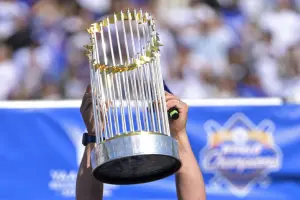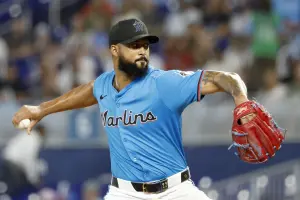
(*) GM's OFFICE: Notes from the 2020 Cheater's Bookmark
One of our favorite little treats in each edition of Ron Shandler's Baseball Forecaster is the Cheater's Bookmark. Designed as a quick-reference card, the Bookmark provides a concise summary of the baseline levels across our toolset of metrics. In recent years, with the MLB run-scoring environment shifting year-over-year, the card has become even more of a touchstone. We work hard to get this snapshot into the hands of the Forecaster writing team during the writing process, so the writers can use it to better contextualize player performances.
Click here to view this year's bookmark. Here are a few observations from it:
1. The hr/f rise continues unabated. The league-average home run per fly ball (HR/F) rate reached a new high at a once-unfathomable 15%. It sat at 13% in the last two editions, and we can find HR/F values under 10% as recently as just five years ago.
2. The AL/NL ERA gap is back. ERAs are up everywhere, of course... bunches of HR have a way of doing that. But they aren't up uniformly. Traditionally, the composite AL ERA has run higher than the NL's, thanks to the designated hitter. Somewhat oddly, that gap had just about evaporated from about 2013-17. It came back in 2018, and held strong at about a quarter-run gap in 2019. So, the default strategy of "when in doubt, choose the NL pitcher" is once again statistically sound.
3. Contact is still a skill, just not like it used to be. Sure, contact is still a foundational skill for batters. But what constitutes good and bad contact rates has continues to slide over time. In fact, we have crossed a milestone in that regard: In 2019, the average contact rate in both leagues fell to 75%. A decade ago, in the 2010 Baseball Forecaster, 75% contact was the "bad under" level, rather than the average level.
4. The Batter/Pitcher BPV gap continues to just be silly. Back when Base Performance Values were introduced, some 20 years ago, the baseline levels for batter and pitcher BPVs were basically level: a BPV of about 50 was average, and 100 was elite. (For pitchers, 100 was closer-worthy.) But in this era where every aspect of the batter/pitcher encounter seems tilted toward the pitcher (except HRs, of course), batter and pitcher BPVs have gone down two different tracks. The average pitcher BPV is in the low 90s now, while batters fell below 30 in the AL this year. This is why we primarily feature BPX in the Forecaster player boxes (and will move that way on the web site this winter as well). Also, while we rebooted pitcher BPV a few years ago, we still have batter BPV on the to-do list.
5. Tracking the impact of openers. It's hard to track the impact or effectiveness of openers without doing some deeper analysis. But there's one hint of them on this page: the percentage of PQS-DOMinant starts reached an all-time low, at 19%. That's down from 21-22% the past few years, and likely reflects the rise of Openers and bullpen games where the day's starting pitcher has no chance of being in the game long enough to notch a DOMinant outing.
Of course, we're just scratching the surface here. This is half a page of macro-level data, excerpted from a book that contains literally millions of data points. There's so much more to come. Speaking of which...
Haven't ordered your 2020 Forecaster yet? There's still time. The deadline to pre-order your copy is this Sunday, November 24. Head over to our shopping cart now to place your order. If you choose the annual-renewing option when you order, you'll have the electronic version in your hands before Thanksgiving. That's next week! (Projected ship date for hard copies is December 10th.)







